Pets Survived the Life-Threatening Flood
The New York City Emergency Management urged people to plan their pets’ emergency “to go” kit in advance and assemble it as carefully as they prepare their own kits. The very next day, the city was hit with a storm that dumped more than a half foot of water on the city.
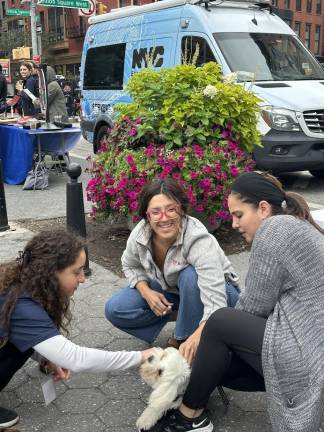
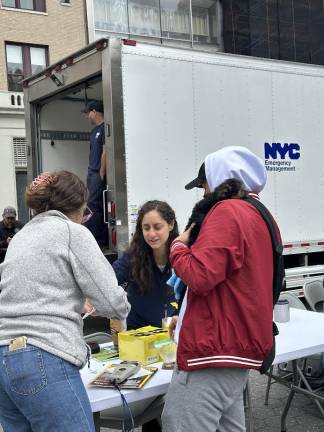
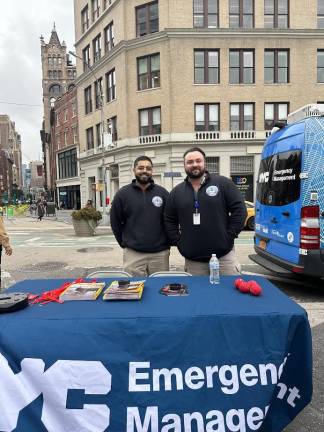
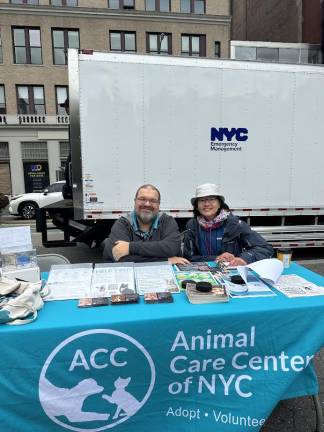
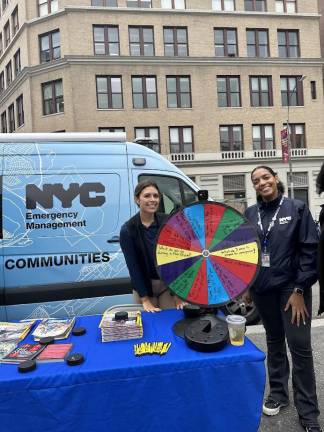
In weather emergencies, when packing “to go” bags for yourselves, experts say it is just as important to have one for your pets loaded with food, instructions and any medications your pet needs.
That was one of the key pieces of advice dispensed by experts at a NYC run Pet Preparedness Fair in Union Square on Sept. 28. Ironically, the fair was held a day before a torrential rainstorm dumped more than a half foot of water on the city in less than a 24 hour period.
Senior Administrator Governmental and Community Affairs at Animal Care Centers for NYC (ACC), Paul Sanders told Straus in an interview that no calls were made reporting a lost pet during the flood. “People were able to find shelter and were luckily able to take advantage of being already prepared.”
At the fair, Sanders poke on measures to take to insure pet safety. “We want to make sure our constituents here in the city will be ready at a moment’s notice to help out their animals and themselves,” he said.
The experts at the fair advised building an emergency kit containing items like several days worth of pet food and water, medicine stored in a waterproof container, first-aid supplies for your pets and, appropriately sized carrier for pets. They also advised carrying a quality picture of you and your pet together to prove ownership in case of separation.
One of the first things that ACC advises is a four step plan. 1. Do your research, 2. Plan with people you know, 3. Have up-to-date information, 4. Have contact info ready.
Also at the pet preparedness fair, Abigail Banks, Director for Individual Preparedness at Emergency Management said, “Today we are focusing on pets like pet preparedness with microchipping and learning about some of the resources that are out there. We have a ‘My Emergency Plan’ where it talks about steps on how to prepare. It talks about making a plan with your family, having two meeting places, medical information written down, go-bag prepared, and signing up for notifynyc, a free app that gives notifications on emergencies.”
“You never know when an emergency situation is going to happen. Flooding can happen very quickly, there could be an accident in a building, we’ve seen cranes [collapse].We want to make sure our constituents here in the city will be ready at a moment’s notice to help out their animals and themselves,” said Sanders.
Of course one day after the officials dispensed this sage advice, New York was hit with a storm on Sept. 29 that dumped a half foot of water or more across the city in one 24 hour period.
When asked if pets are more at risk in New York, Sanders stated, “Animals anywhere in a home have love given to them. I don’t know if they are necessarily more at risk. There are outside factors in a big, bustling metropolitan area that could definitely be more impactful to an animal than there are in a rural or suburban area.”
As it started to drizzle on Sept. 28 and the wind began to pick up, Alexandra Silver, director of the mayor’s office of animal welfare, finished up assisting a volunteer veterinarian for Bond Vet–Evelyn Cintron–with microchipping a dog.
“We were excited to pair with the mayor’s fund in NYC to get volunteer services so we could offer free microchips to dogs which is very important to reuniting lost pets with their families. God forbid an animal gets lost, enters a shelter and there is no identification or license. [With a chip the people at the shelters] take a scanner and scan the dog when they come into a shelter, then it will pick up the number where they can look it up online, match it with the contact information and reunite the lost dog with their people.” Silver said, “A lot of animals come in as what they could call strays, but they probably have people looking for them, if they just had the ID [that the microchip has]. We want to help keep pets in their homes, these are our family members, our babies.”
Sanders went on to say, “Animal Care Centers of NYC sees over 20,000 animals coming into our shelters each year. Pets that come in with microchips have a significantly higher chance of being reunited with their family then those that don’t.”
Currently, there is no law mandating pets to be microchipped, but there is a law requiring animal shelters and rescue organizations to scan for a microchip within 24hrs of admission.
Banks said, “To me, the most important takeaway is just talking about [preparedness] with your family. It’s the easiest thing to do. Secondary is preparing. Practicing your plan and getting stuff ready. That’s the backup to having prepared.”
“You never know when an emergency situation is going to happen. Flooding can happen very quickly, there could be an accident in a building, we’ve seen cranes [collapse].We want to make sure our constituents here in the city will be ready at a moment’s notice to help out their animals and themselves.” Paul Sanders, Senior Administrator Governmental and Community Affairs at Animal Care Centers for NYC.